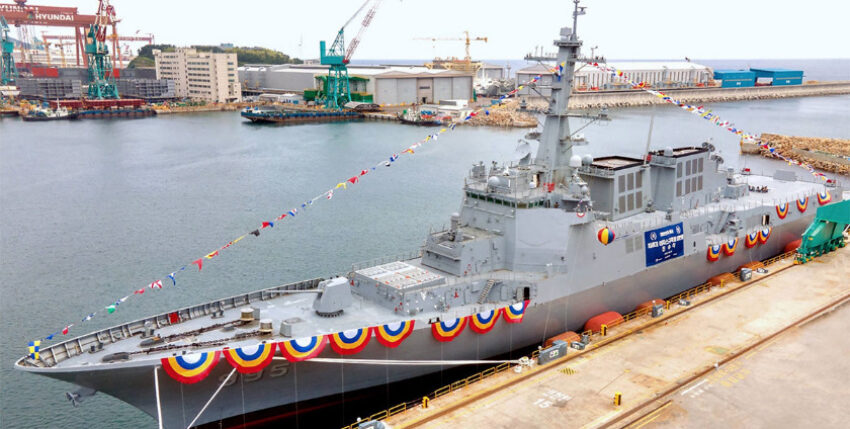Addition to the article of 4 August 2022 by editorial note (see below)
In view of the rapid development of Chinese shipbuilding off its own coast and the aggressive behaviour of North Korea behind it, South Korea has planned a major expansion of its navy. An important part of this programme is the construction of three state-of-the-art AEGIS units (FüWES), which are directly compatible with the ballistic missile defence (BMD) destroyers of the USA and Japan. It is the second batch of the "Se Jong Daewang" class destroyers called KDX-3. At the end of July in Ulsan, on the Sea of Japan (Editor's note) 400 kilometres south-east of Seoul, the first ship was launched at the Hyundai Heavy Industries (HHI) shipyard in the presence of President Yoon Suk Yeol and christened "Jeongjo Daewang" (Jeongjo the Great). As the 22nd king (1752 - 1800), he was one of the outstanding figures of the Joseon Dynasty (1392 - 1910), which had a decisive influence on the history of the East Asian peninsula. The destroyer, which is built similarly to the "Arleigh Burke" class, will also displace around 8,200 tonnes, but will have a slightly longer waterline at 170 metres in length and is scheduled to enter service at the end of 2024. The main weapon suite - based on national technology - will consist of long-range ship-to-shore ballistic missiles and ship-to-air missiles. In addition, a Korean sonar system and an American MH-60R Sea Hawk helicopter, which is due to enter service from 2024. Stay tuned - a consistent step into the future!
Addendum: The construction of the third unit of the second lot has been under contract with HHI since mid-December 2022.
Good to know
Shortly before the end of the 15th century, there were two existentially threatening invasion attempts by Japan during the Joseon Dynasty. Korea's most famous military commander, Admiral Yi Sun-sin, was instrumental in the defence of his country.
He is credited with the invention of the armoured warship: he covered a manoeuvrable galley with a curved bronze shell ("turtle ship"), which offered good protection against the weapons used at the time. The damage inflicted on the Japanese supply fleets by these new ships forced the enemy commander Hideyoshi to retreat (the additional troops of the Chinese Ming dynasty approaching from the north should not be overlooked). The subsequent diplomatic negotiations of the Korean royal family brought peace between the two neighbouring states that lasted 200 years.
Addendum: Editor's note
At the end of December 2022, the Corean Culture and Information Service of the South Korean Ministry of Culture, Sports and Tourism pointed out official Latin spellings of Korean names to the marineforum.online editorial team and asked them to make corrections to the names of the President and the ship as well as an addition to the geographical name of the "Sea of Japan":
The Republic of South Korea refers to this sea area as the "East Sea". As Japan and South Korea have not yet been able to agree on a common name, the International Hydrographic Organisation (IHO) and the United Nations Conference on the Standardisation of Geographical Names (UNCSGN) have decided that both forms of the name should be accepted in publications.
The following background is taken from the letter from the Culture and Information Service:
"Japan insists on using the name "Sea of Japan" based on a decision of the IHO conference in Monaco in 1929. Based on the results of this conference, the first edition of the IHO publication "Boundaries of Oceans and Seas" was published, in which the name "Sea of Japan" was used exclusively. However, the Republic of Korea never agreed to this decision, as it was unable to participate in the conference at the time due to Japanese colonial rule. As a result, the South Korean government has been constantly trying to resolve this issue since its independence."
It's better to know more!










